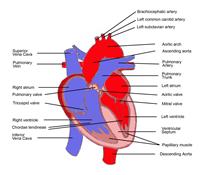Open Learning - Learn Cardiorespiratory Function, Health and Disease - Tutor Support Available
 Learn the biological processes that drive breathing, gas exchange and blood flow in the human body.
Learn the biological processes that drive breathing, gas exchange and blood flow in the human body. - Build on the existing general biology knowledge
- Explore anatomical, physiological and biochemical processes that drive cardiovascular and respiratory function.
Prerequisite: Human Anatomy & Physiology BSC101 or equivalent.